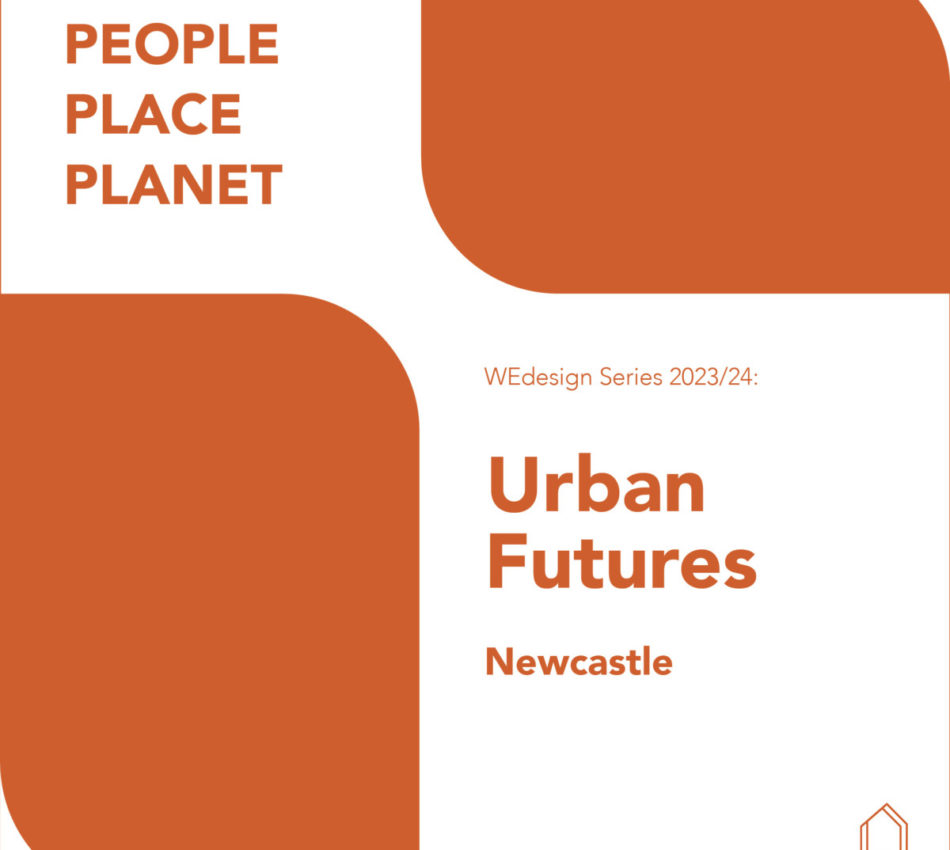Written by:
On Tuesday 19 March we were hosted at Newcastle University, in the impressive Armstrong Building for our final in-person WEdesign event of the series.
This event was planned and delivered in collaboration with tutors and students from Newcastle University’s School of Architecture, Planning and Landscape and we were joined by participants from a range of different interests, backgrounds and professions.
Over the course of the evening we tasked our participants with exploring the theme of Urban Futures: Sharing Capacity and Resources and, facilitated by our students, they worked together to ask the question ‘What if?’ through co-designing a series of propositions for change through discussion, debate and playful making activities.
Breaking the ice
When the participants arrived they were greeted by students who had created several icebreaker activities which participants could interact with. The students were experimenting with different design engagement activities they are developing as part of their studies and the WEdesign events created a safe space for them to test these methods with our participants.
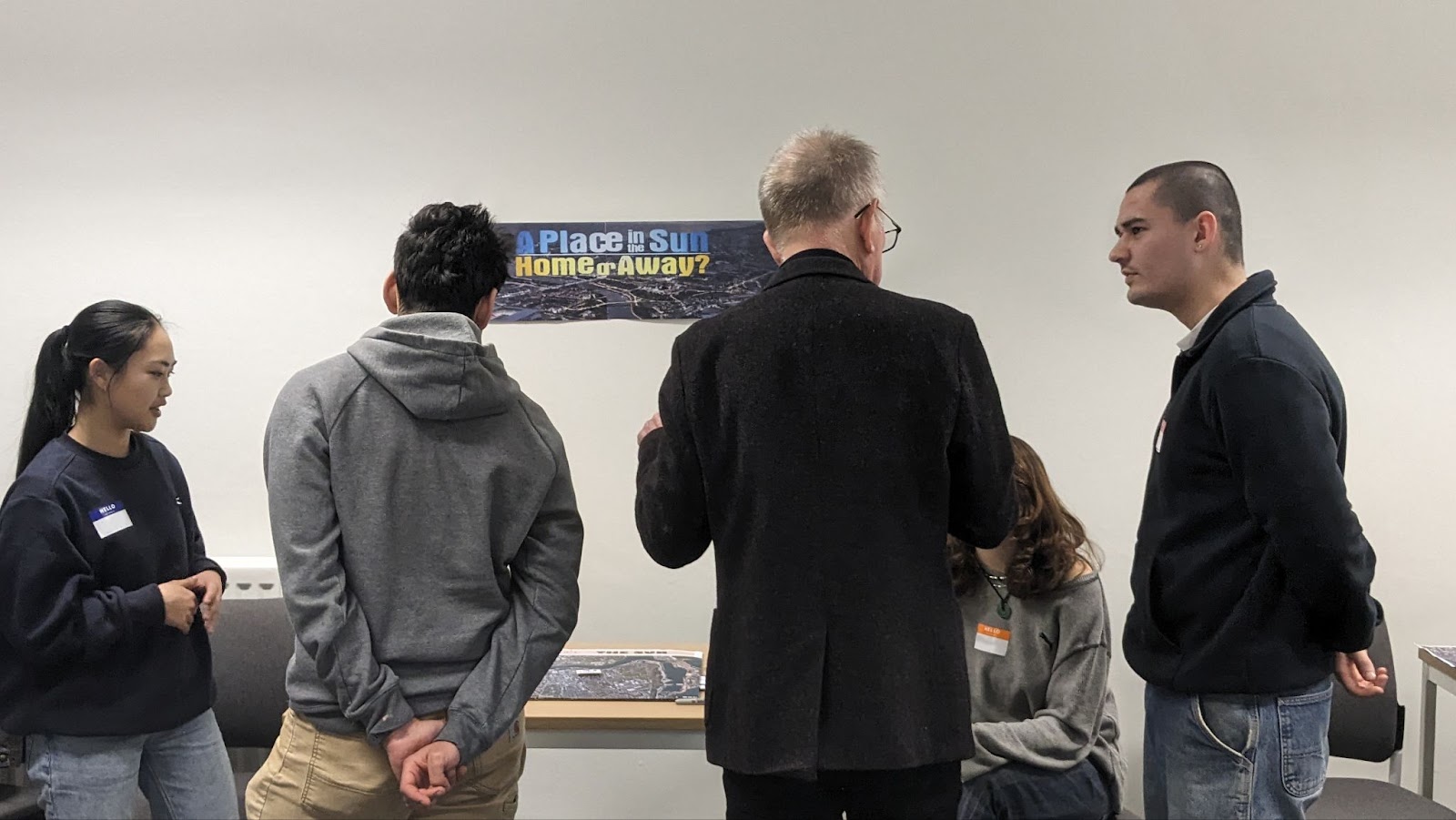
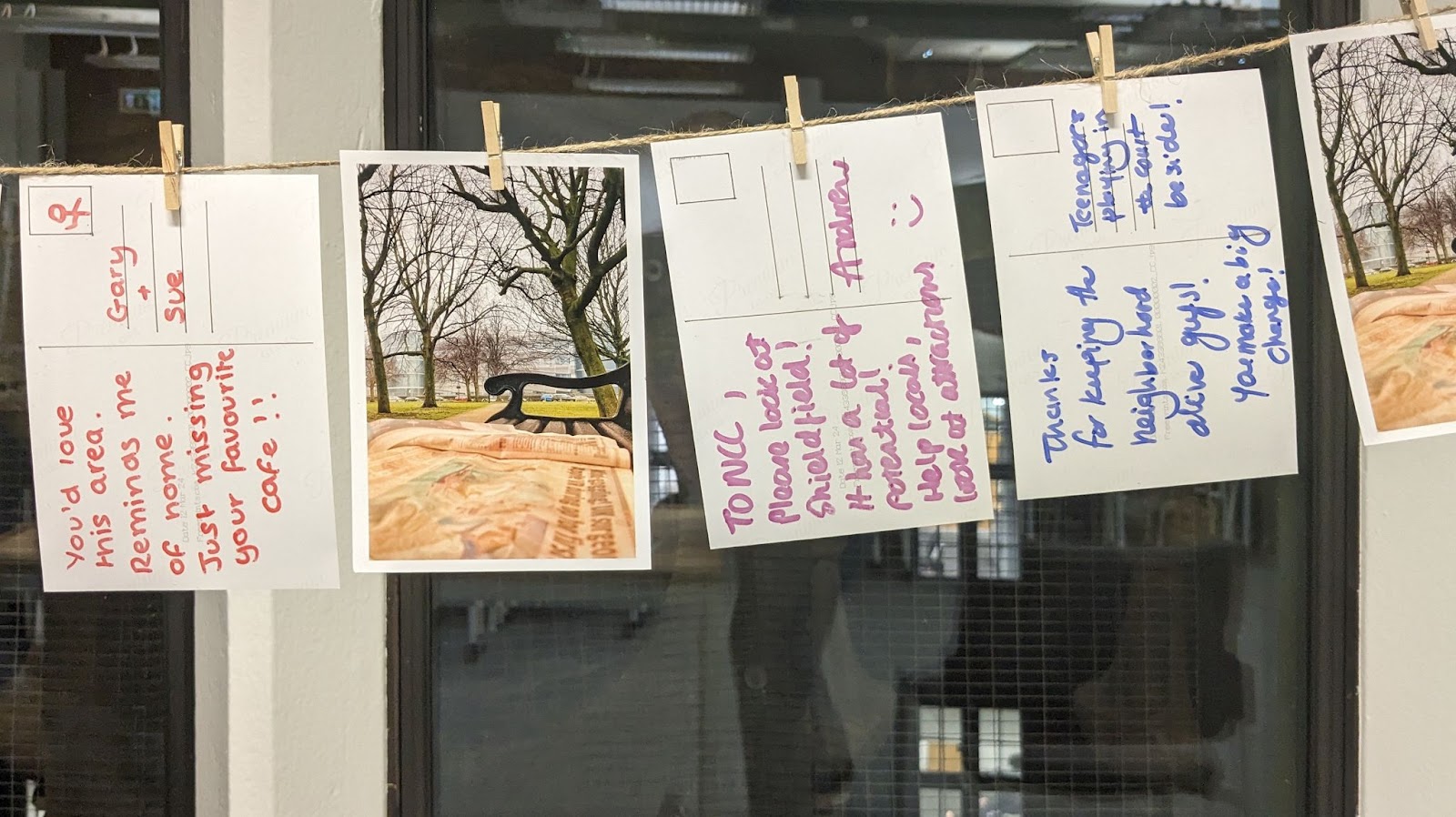
Propositions for Change
For this event we worked with a larger group of students than usual and to accommodate more student facilitators we added another table and an additional lens to our WEdesign event model. So for this event our participants had a choice of 5 different lenses to explore, which included: Education, Policy, Ecology, Practice and Community.
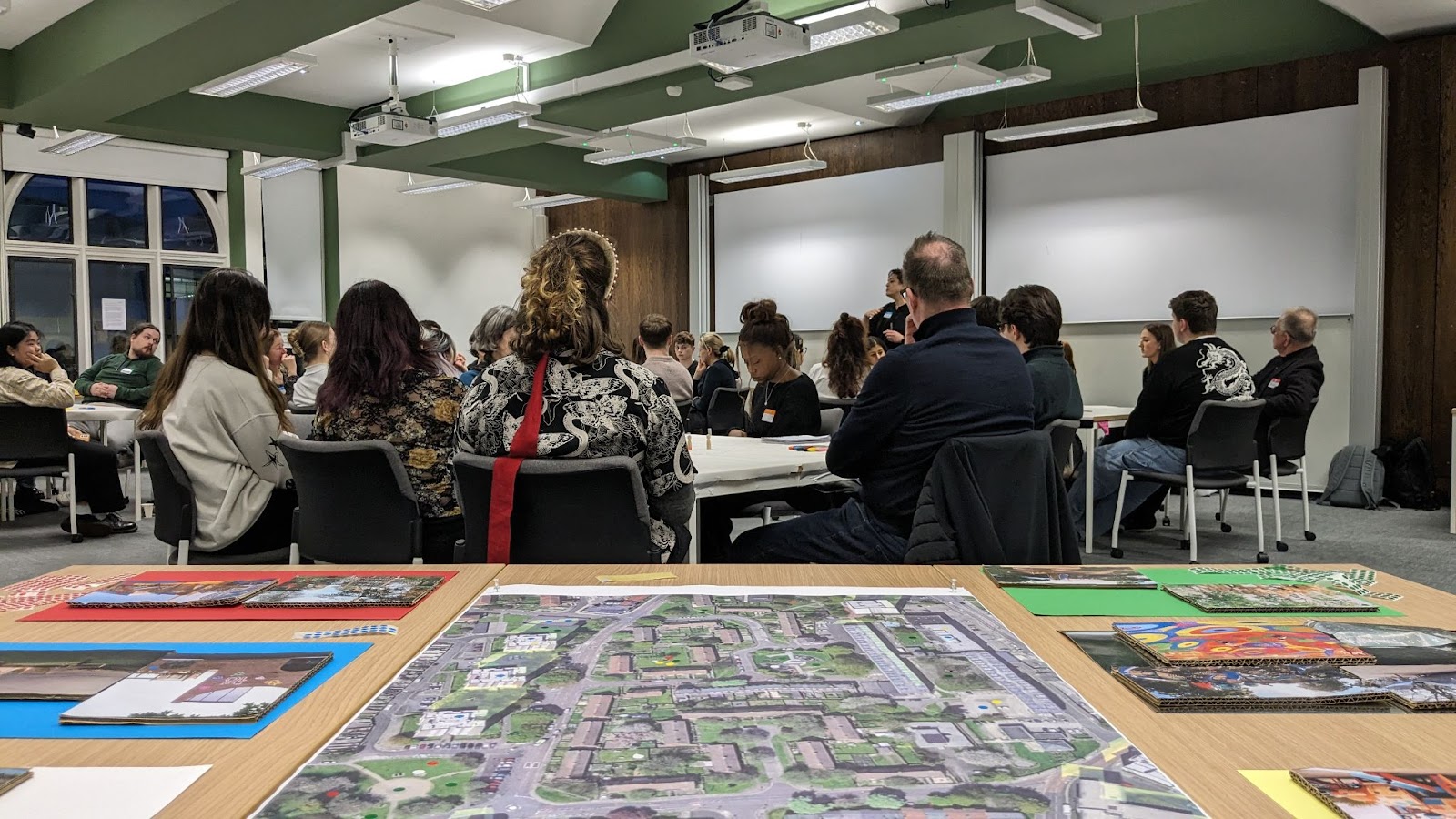
Each group was facilitated by our students, who guided the participants and discussion through a series of prompt questions with the aim of co-designing propositions for how we might do things differently. At the end of the session the groups pitched their ideas, using models which they had created from simple craft materials which offered a visual representation of their propositions.
Education
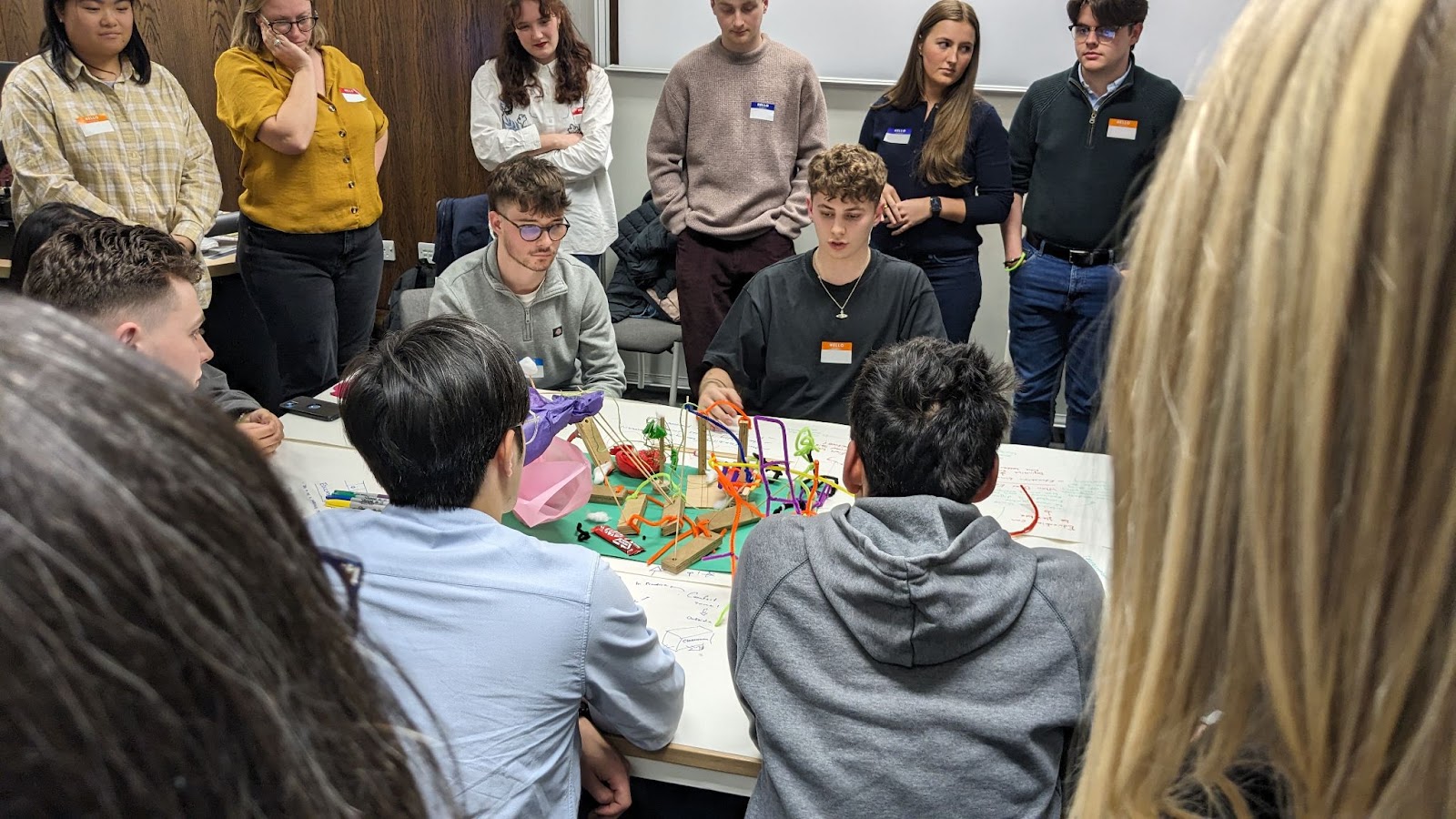
At the education table they started with questions to participants including; What is education? What could be better? and What would change look like? This was followed by a lively discussion around peoples experiences and definitions of education.
The group pitched their proposition for change which included transforming the school building to make learning more accessible and fit around people’s different learning styles. They wanted to build more flexibility into the curriculum and also how people are taught. The group also wanted to create an education framework which encouraged students to go out and explore and use what they had learnt in the classroom and apply it into the real world.
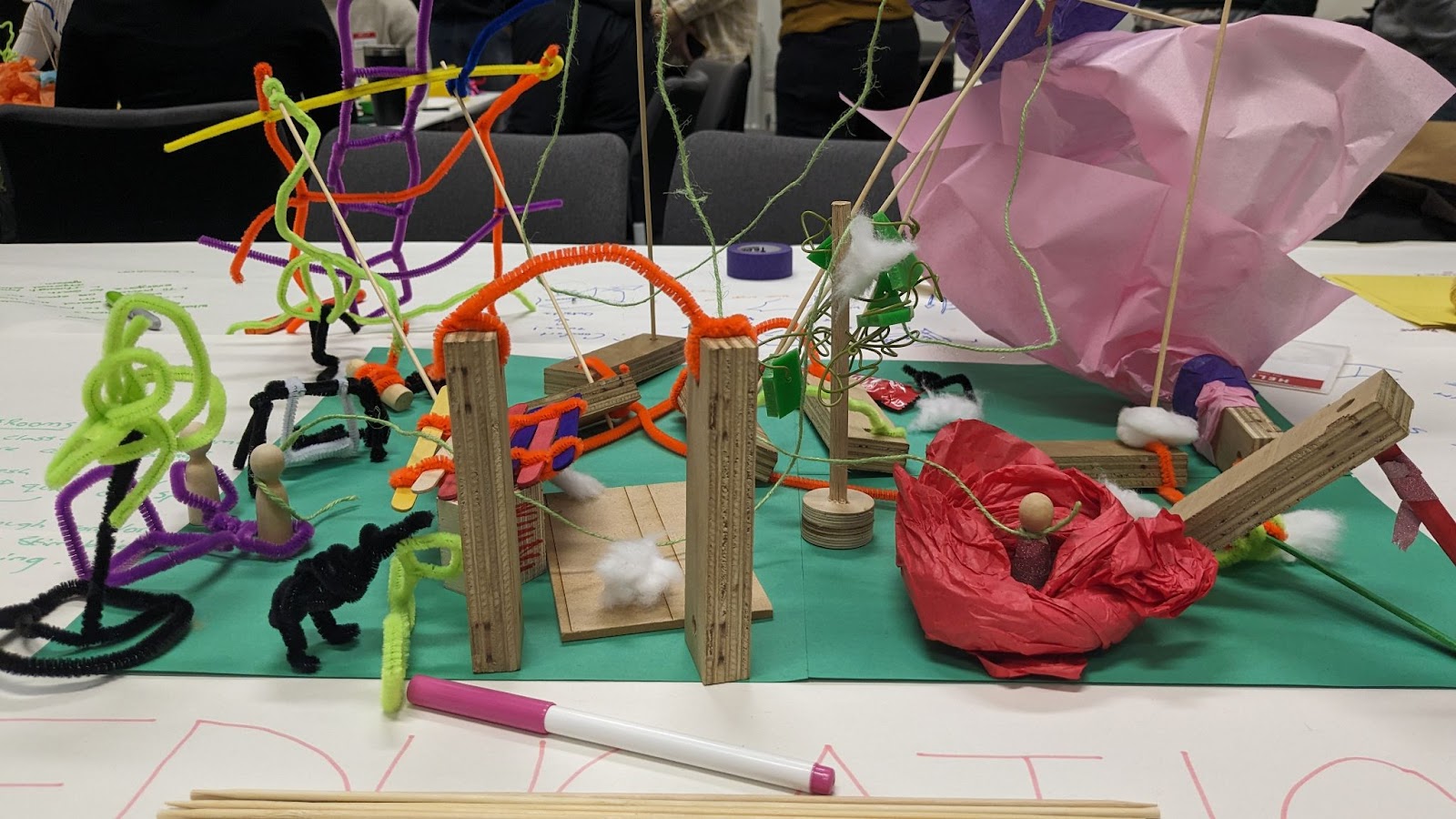
The model they created was colourful, fun and bright and included an ‘aspiration platform’ with various ways up to this platform which represented the different methods of learning, leading to increased aspiration. The model also showed different and flexible ways of connecting to other people, to nature and to the outside world.
Policy
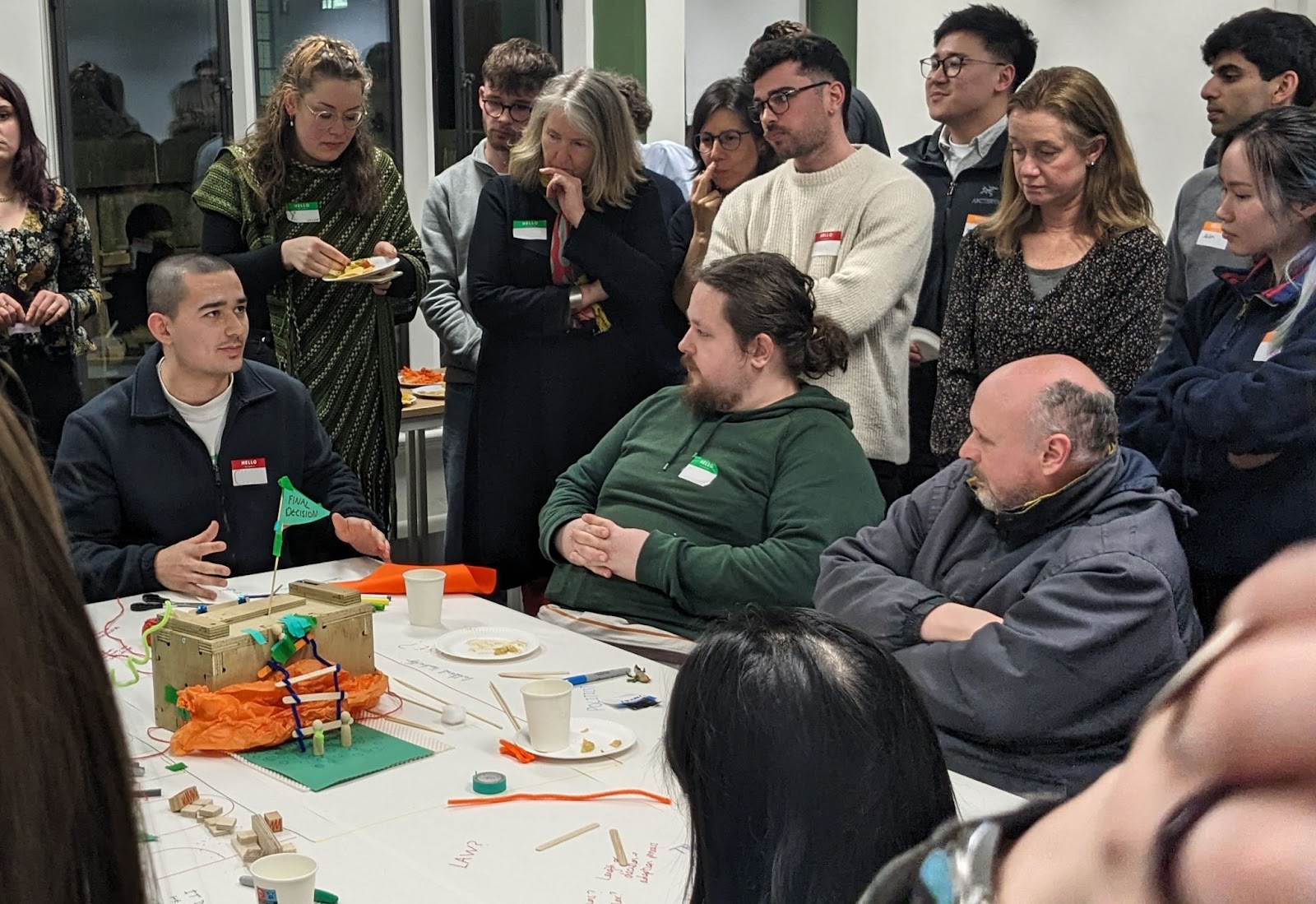
The policy table started with a discussion around what policy means to the participants and talked around the definition of the word. Then followed a deeper conversation about what is going wrong (and right!) within policy and how they could make change.
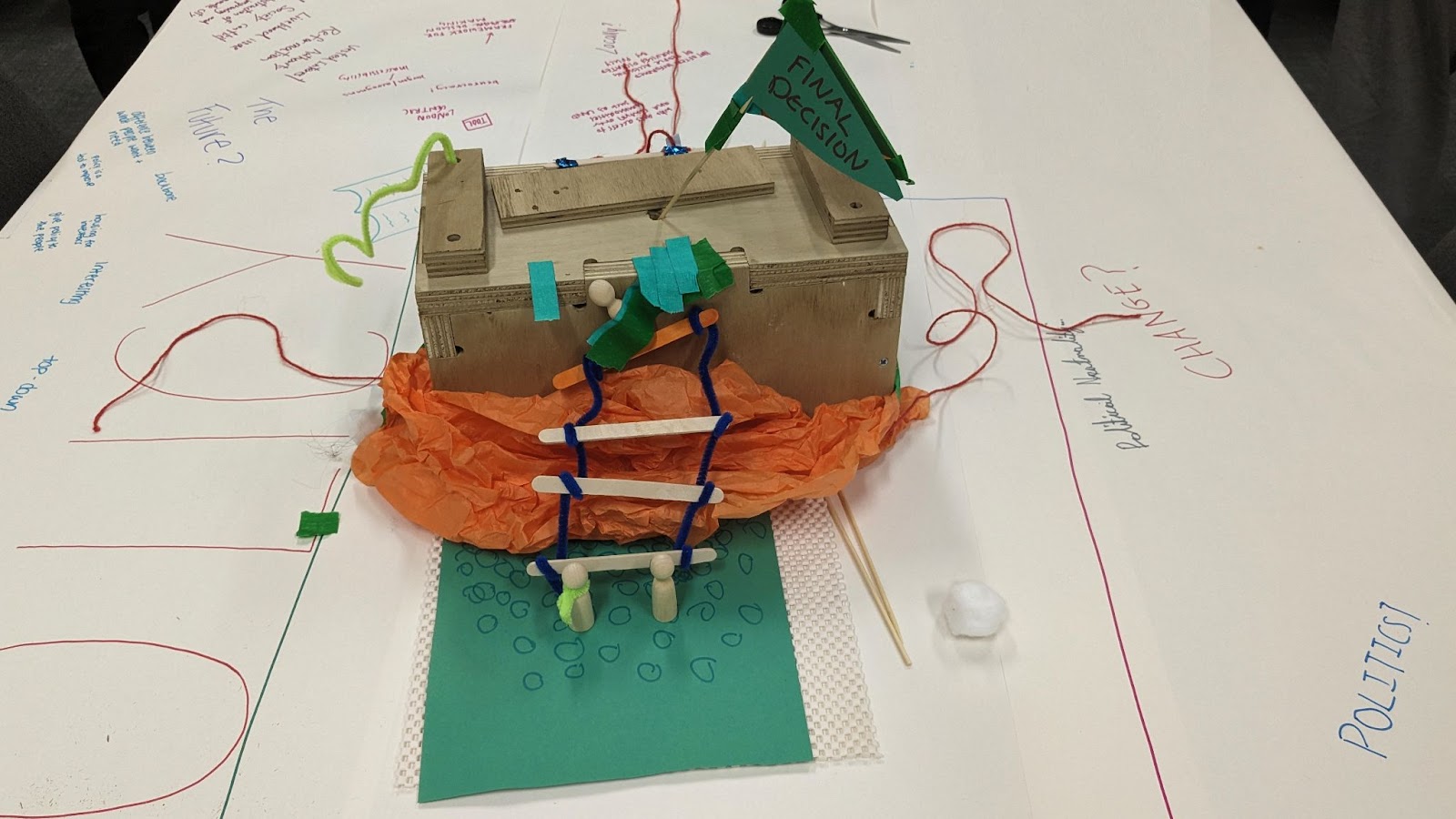
The model the group created was a high sided solid cube, which represented policy as shut off, hierarchical, difficult to access and get into for people. They wanted to express how, within the context of housing, people who need to access routes into policy which could actually help them, can often neither understand nor shape policy and therefore they have little or no control over what happens to them.
The group pitched an idea for different, accessible and more flexible routes into policy which would enable people to have more power and more control over what happened to them and where they lived.
“ Let’s do things from bottom up and not top down”
Practice
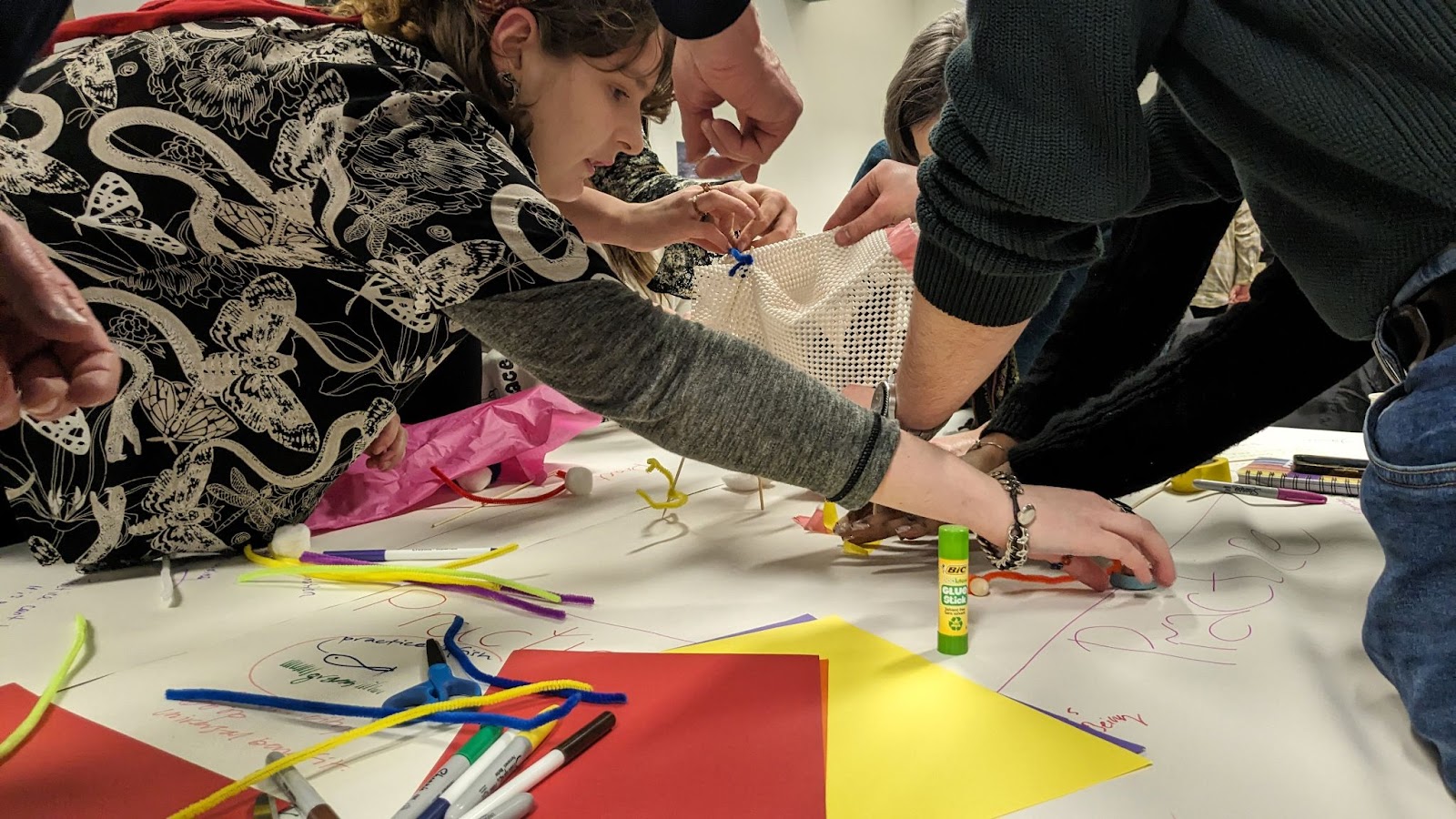
The practice group started off by posing the question back to the whole group of ‘What is it?’ as practice can be difficult to define. And indeed the group found in their initial discussion the challenges of defining practice, as it has many definitions.
For their idea, the group were inspired by the common saying of ‘practice makes perfect’. They changed it and made it more realistic, turning it into ‘practice makes not quite perfect’. As part of their model they constructed a simple dwelling which symbolised how practice should be more iterative, inclusive, experimental and ethical.
Their model included the ‘Spiral of continuous improvement through practice’, no doors so that anyone could have access and people were connected with a scarf symbolising people coming together through practice.
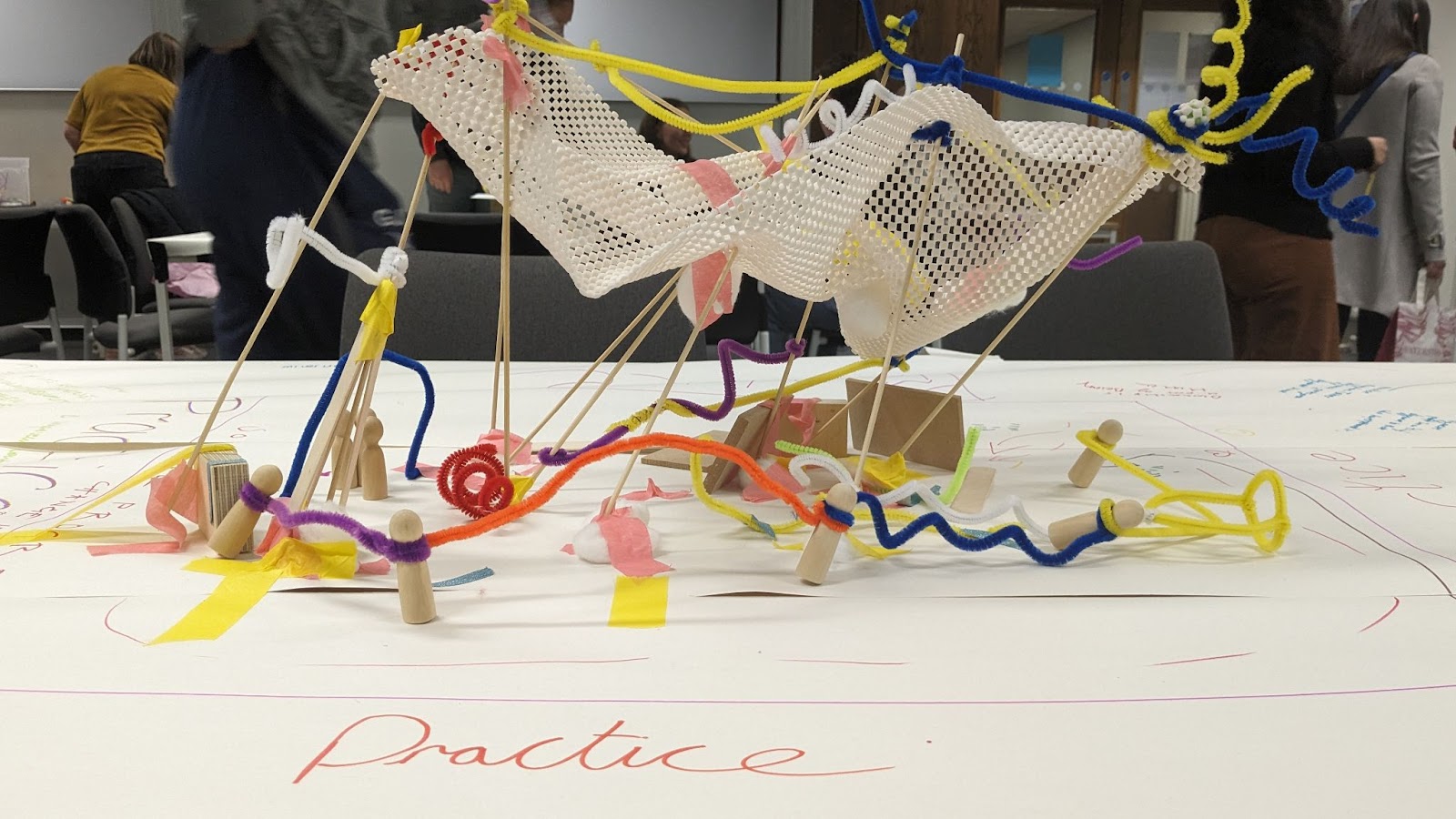
The group also noted that practice is not just about architecture and how they felt that it needed to be broader and have a more flexible definition.
“we get better together”
“Consultation between traditional design practices and industries are key”
“Non-ethical practice isn’t practice”
Community

The Community table had initial conversations about different hierarchies in the community, how community participation can be challenging for many people and it can be difficult to encourage people from diverse backgrounds to come together and get involved. The group was keen to understand the barriers to community participation and their pitch centred around creating a meeting place for communities to come together.
This group found focusing on a specific geographical area in Newcastle helped them understand real challenges and barriers to participants and how they might overcome these.
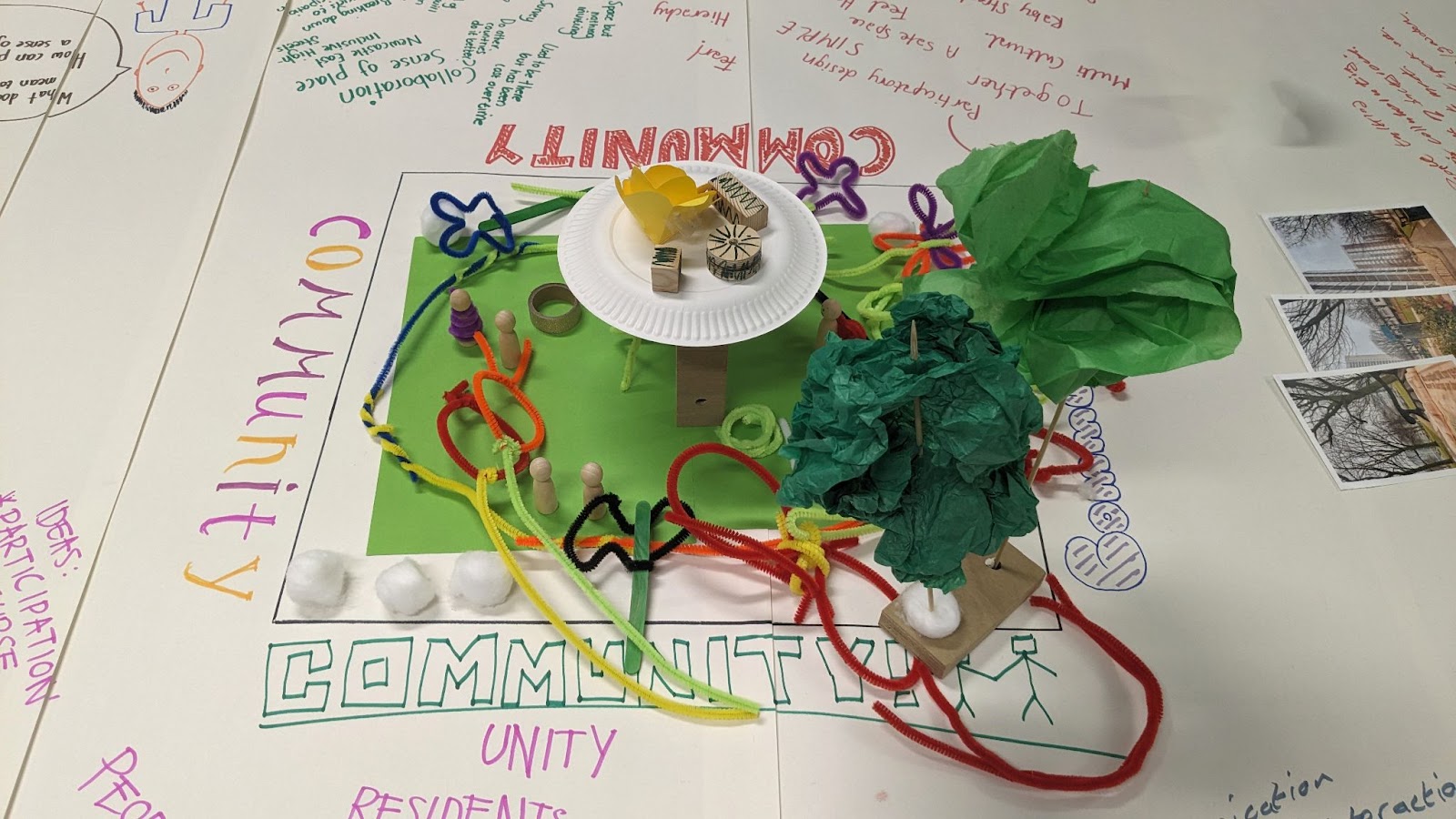
Their idea centred on creating a safe place where people can connect, meet and collaborate with others. They wanted to include a dining table for eating together and to create dinner and tea parties to bring people from the local community together, overcoming the barriers and challenges which stop people from connecting with others from the community where they live and work.
“Let’s bring people together”
“Great experience and it opened my eyes to the barriers to participation”
“Participation: How can we make it work and meaningful for those involved? (not just a tick box)”
Ecology
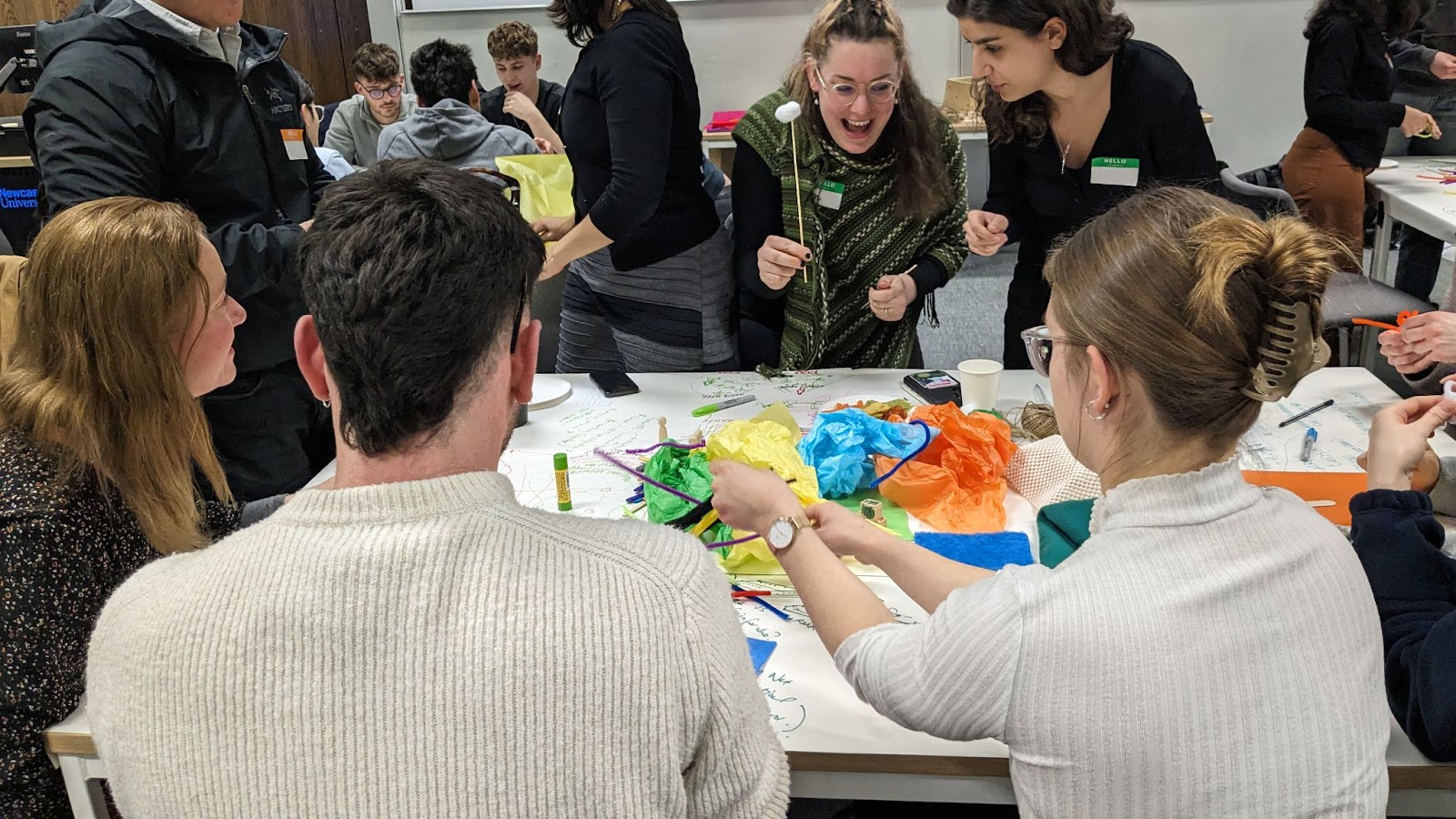
The Ecology table started by posing the question, ‘How does ecology relate to the built environment?’, which inspired deep conversations about green spaces and nature within the built environment and how cities are human centred. They also explored the concept of eco vs ego.
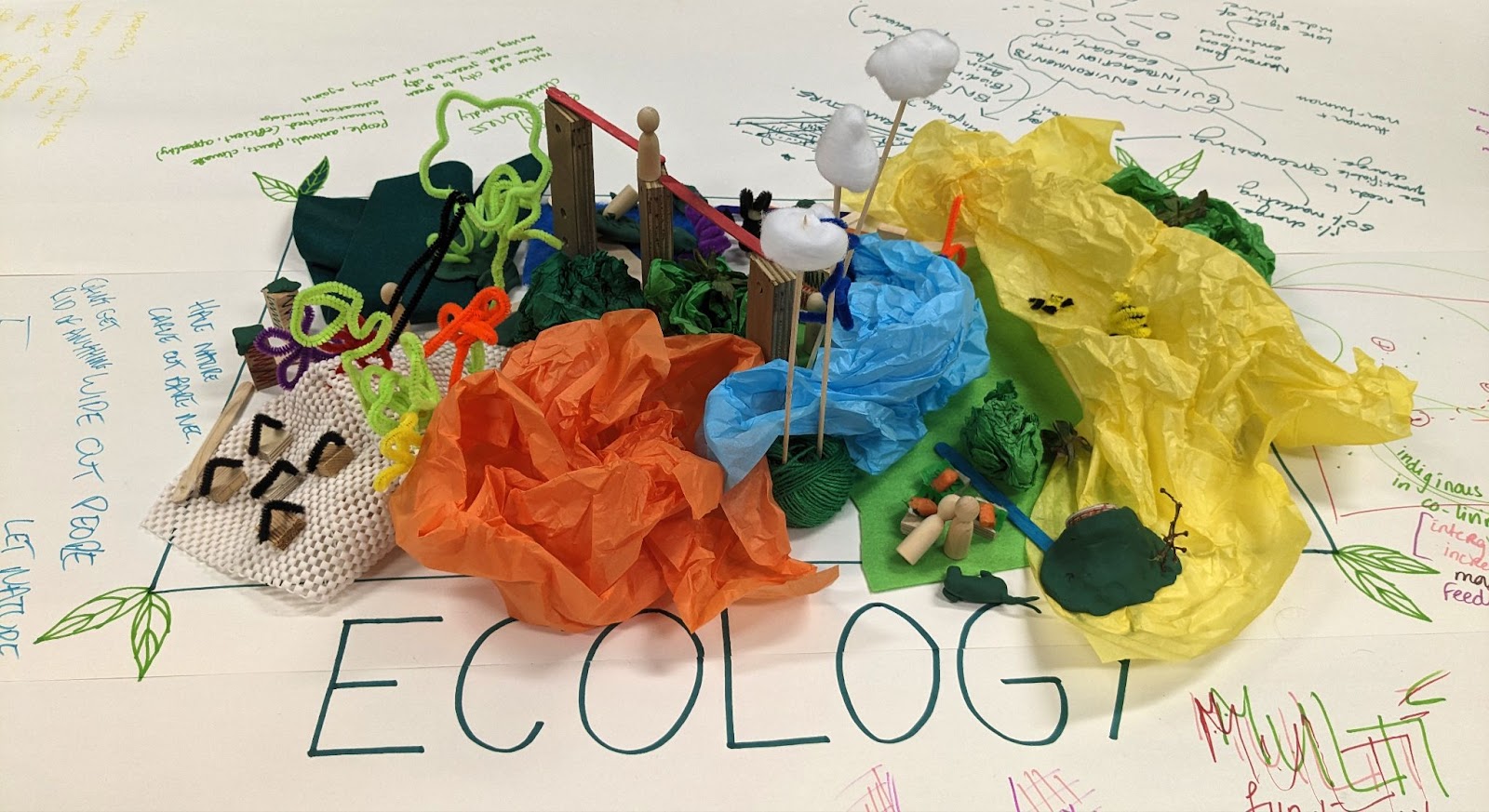
The group’s model was very colourful, busy and chaotic and they pitched the idea about starting with nature when any development is proposed and then building cities in and around the plants, animals, water and green spaces. They wanted the humans and built environment to flow around the natural world, adding cities to green spaces rather than adding green spaces into cities.
‘’it’s chaotic but that maybe how it’s supposed to be, rather than going against nature’’
‘’Building with nature = nature first approach’’
Key themes and takeaways
Once all the ideas had been shared, we all came back together to draw together some of the discussions and themes which had emerged.
With such diversity of voices in the room it was great to see the inspiring ideas which were created in such a short amount of time and there were some interesting threads of conversation which had started to emerge, including:
- The importance of experimentation and being iterative to enable people to challenge the status quo, to develop new ideas and to adapt to our ever changing environment and society.
- Positive change can happen at varying levels and scales. Sometimes a small physical intervention, such as a community dining table in an open space, or change in behaviour, such as picking up litter, can totally transform an area.
- Access is important and we need to consider and different, less obvious, ways and routes into institutions, systems and spaces
“the power of people thinking together and the joy of sharing ideas about better collective futures”
“There is so much hope and knowledge amongst us all”
“It was really positive to see such a large group of people in a room want to engage – but is it possible to get those people to take a step further and make change?”
As well as being a great event with inspiring discussion, this event was also a valuable opportunity for our students to gain confidence in engaging and working with different people from outside the university and enabled them to develop their own voices and facilitation skills whilst exploring the themes which tied into their studies.
In closing we would like to extend our thanks to Armelle Tardiveau and students from Newcastle University’s School of Architecture, Planning and Landscape who worked hard to make this event so successful.
We would also like to thank all the participants in Newcastle who attended and offered their time, thoughts and generous contributions.
